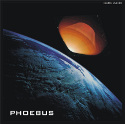Probabilistic Modelling of Radiation Processes

The post analysis of the FIRE-II mission flown in 1965 showed that radiative heating contributed to 90% of the total heat-flux. Since there is no simple rule or equation which allows a quick estimation of that quantity it is essential to understand and model radiation processes as accurate as possible in order to design TPS material accordingly.
Radiation plays a crucial role in many fields of space research. Maybe the most important field for this activity is related to atmospheric (re-)entry manoeuvres with entry velocities of about 10km/s or more. Those entry velocities are called hyperbolic and lead to high enthalpy flows around the entry body.
The post analysis of the FIRE-II mission flown in 1965 showed that radiative heating contributed to 90% of the total heat-flux [1]. Since there is no simple rule or equation which allows a quick estimation of that quantity it is essential to understand and model radiation processes as accurate as possible in order to design TPS material accordingly. Traditional models for re-entry radiation simulations (Boltzmann and QSS) are either unable to reliably reproduce the relevant spectra seen by the re-entry body or suffer from other problems like data availability and consistency, see [2] and references therein. Consequently, the reliable prediction of the non-equilibrium plasma radiating in front of the re-entry body is not sufficiently possible in all cases of interest. The ACT is working on designing a fully kinetic and probabilistic code to tackle the radiation problem across all Knudsen numbers. Currently, the model is at very early stages. We have been working on developing a probabilistic model for spontaneous emission in atoms and reproducing a radiation equilibrium spectra on a basis of a multi-particle simulation. A concept has been presented which shows how the noise in the radiation signal, mainly caused by particle discretisation, can be reduced significantly. This noise reduction concept demands active control of simulated particle number but is consistent with the approach by Wu et al. [3] and its (catalysis) extension presented in [4].
literature
- M. Fertig, G. Herdrich, S. Lohle, A. Preci, and S. Lein, Air Radiation Flight Instrumentation Package, "Report IRS-08-P5", Institute of Space ystems (IRS), Stuttgart University, July 2008.
- D. Petkow, M. Zaretskaya, A. Kling, and G. Herdrich, "Progress in Probabilistic Modelling of Atomic Spontaneous Emission Processes in DSMC", to be published in Proceedings of the 5th International Workshop on Radiation of High Temperature Gases in Atmospheric Entry, 16-19 Oct 2012, Barcelona.
- J.S. Wu, W.-J. Hsiao, Y.-Y. Lian, and K.-C. Tseng, "Assessment of conservative weighting scheme in simulating chemical vapour deposition with trace species", Int. J. Num. Meth. Fluids, Vol. 43, 93-114, 2003.
- D. Petkow, A. Mirza, G. Herdrich, and S. Fasoulas, "Treatment of differently weighted particles in reactive re-entry flows with DSMC", Proceedings of the 8th International Symposium on Rarefied Gas Dynamics, July 9-13, Zaragoza, 2012.